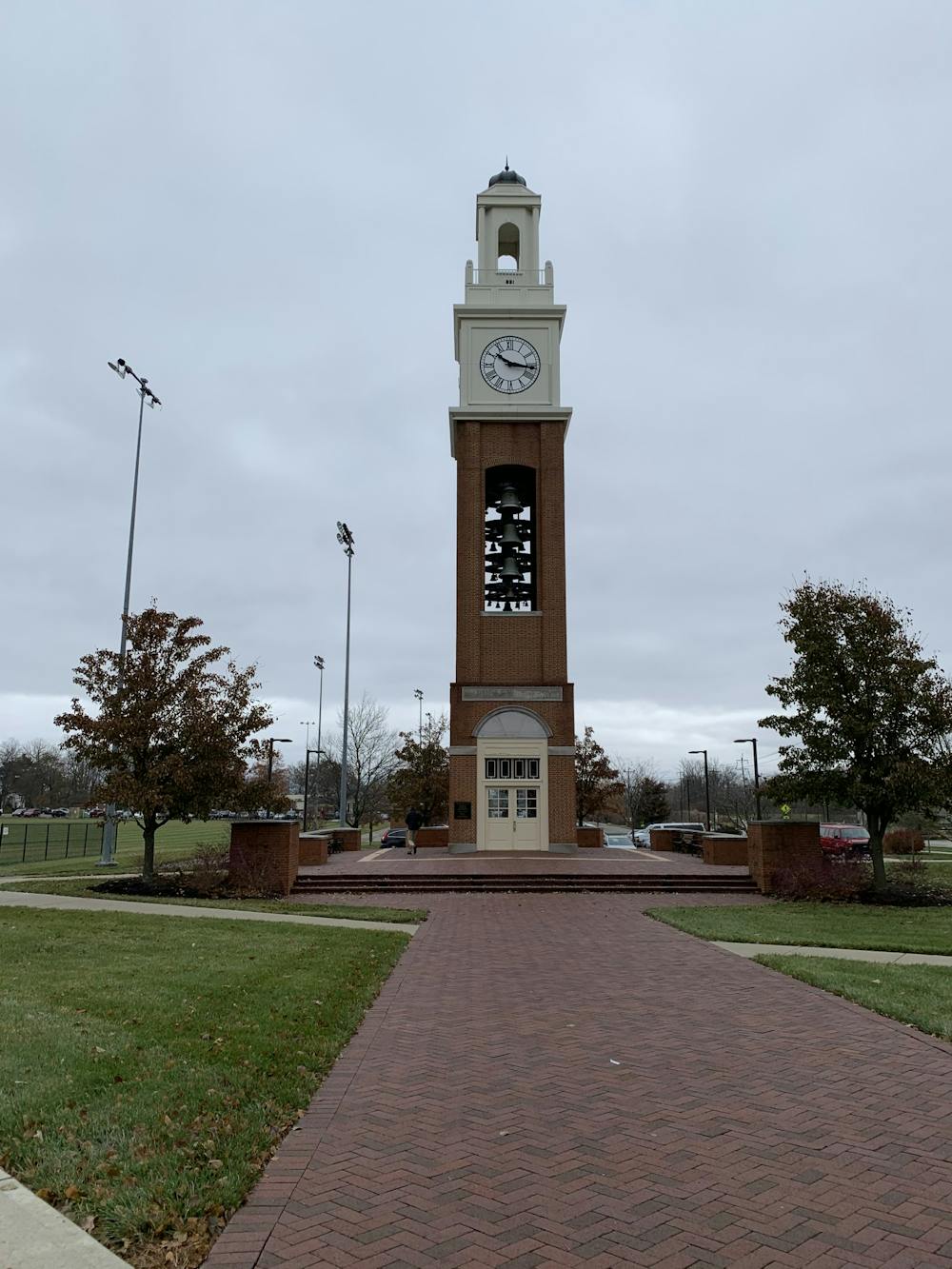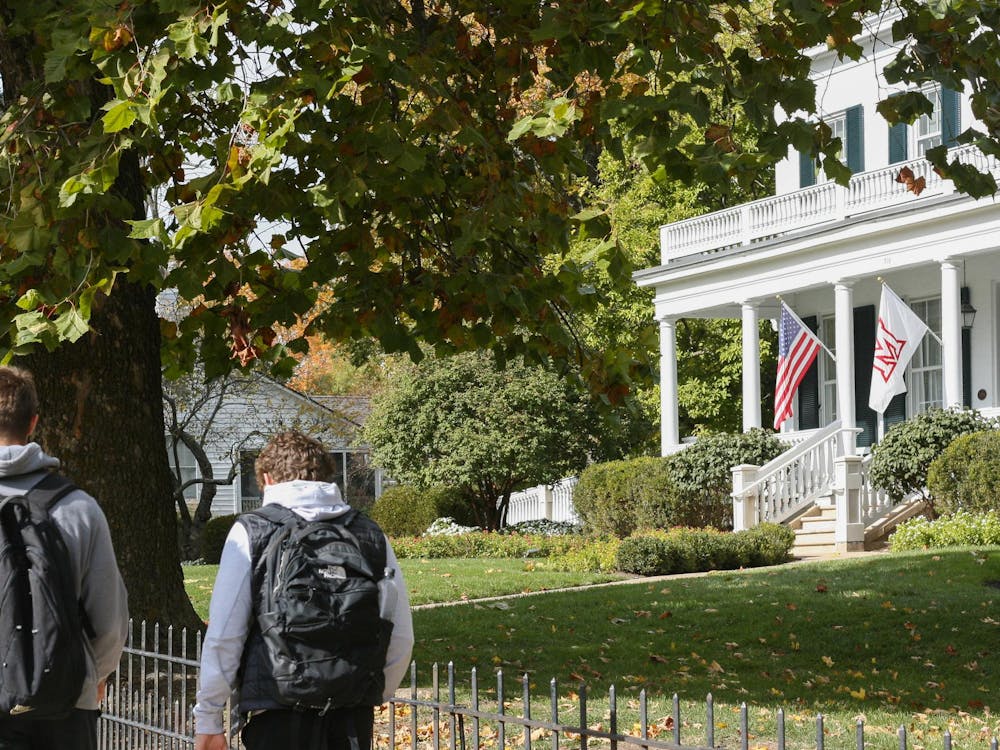“Bad Romance” by Lady Gaga, “A Spoonful of Sugar” from Mary Poppins and “Here Comes the Sun” by The Beatles: these are the kinds of tunes Miami University students listen to as they travel around campus.
But rather than emanating from earbuds, these songs ring throughout campus for all to hear several times a day, courtesy of The Verlin L. Pulley Carillon and Clock Tower.
The university icon, referred to as “Pulley Tower,” is designed for more than just telling the time.
Since its construction in 2001, walking past and listening to the tower’s tunes has become an everyday experience for students, professors and staff alike. Yet the tower’s history and how songs are selected to be played remain a mystery to many.
The location of the tower was chosen in part by its donor, William W. Pulley, who is now in his 90s.
“The idea is that people coming in … would see the tower as sort of a welcoming way to let people know that they are on the Miami campus,” Pulley said.
The dedication of a musical bell tower was inspired by William Pulley’s time as an undergraduate at Dartmouth College, where he fondly remembers walking around campus listening to Baker Bell Tower playing music between classes. He thought a musical bell tower would be the perfect addition to Miami’s campus.
When Pulley donated the 95-foot tower to Miami’s campus, he dedicated it to his father, a 1925 Miami graduate by the name of Verlin L. Pulley.
In addition to his accomplishments as founder of Capitol Varsity Company, one of the most successful dry cleaning companies in the country, Verlin Pulley was also a prominent member of the Oxford community. He was mayor of Oxford in the late 1930s and was named “Oxford Citizen of the Year” in 1955.
“I remember my father,” Pulley said. “My father was very involved with Miami. [He was a] Trustee. [He] graduated from Miami, as did my mother. That was the purpose [of the tower], to honor my father.”
Once all of the details for the tower were finalized, 12,000 pounds of bronze were cast into 50 bells in the Netherlands before being shipped to Oxford for installation.
Inside the tower, gracing the mahogany colored walls, is a small golden coat hanger, which serves as a marker of the building’s erection, a photograph of William Pulley and a bust of Verlin L. Pulley.
Enjoy what you're reading?
Signup for our newsletter
However, the most important item in the room sits in the dead center: a 61-note keyboard with a Dell computer attached to its side.
Although the keyboard is fully functional, and the tower could be played manually, almost all of the songs played on campus are performed by the preprogrammed computer system.
“There are probably around 200 songs programmed into the computer,” said Director of Building Maintenance Daniel Olthaus.
Prior to 2013, when the new computer system hadn’t yet been added, many people used to come to Pulley Tower on Saturdays to enjoy hour long “concerts” played by retired French professor and Pulley Tower’s former carillonneur, Randy Runyon.
To play his songs, Runyon used to have to transcribe notes from a CD or YouTube. Sadly, as a result of the installation of the current computer system, Runyon’s song files were deleted.
Runyon said that songs that can be easily sung are best suited to the bells, which explains the lack of rap stars, like Eminem, echoing across campus.
“Songs that have to go fast with a strong rhythm would probably not work because bells keep sounding after they are struck, and so the notes would blend together when played at a fast tempo, and it would sound like a mess,” Runyon said.
Pulley Tower is programmed to play for 10 minutes every hour, with some exceptions.
“It doesn’t play at nighttime,” Olthaus said. “It stops around 9 or 10 at night so that it doesn’t play in the middle of the night. Then it resets and starts again at 7 a.m.”
The reset that Olthaus is referring to is the process of random song selection that the computer goes through every night as to avoid playing the same songs every day.
Luckily, there are a wide variety of playlists that the computer can select songs from. These playlists include classic 1970s music, Disney tunes and classical arrangements.
When Pulley donated the funds to build the tower, he also made a list of songs to be played. Some of these songs include the Miami Alma Mater, the Miami fight song and traditional fraternity songs like “The Sweetheart of Sigma Chi.”
Olthaus said that in the past, William Pulley had often been seen at the tower enjoying its music, but that it had been quite a while since that had happened.
“At one time, I did check [on my father’s tower] ... but I haven't for many years,” Pulley said.
Although people may not know its history or why Pulley Tower plays the songs it plays, its significance to students, residents, professors and visitors resonates much longer than 10 minutes each hour.




